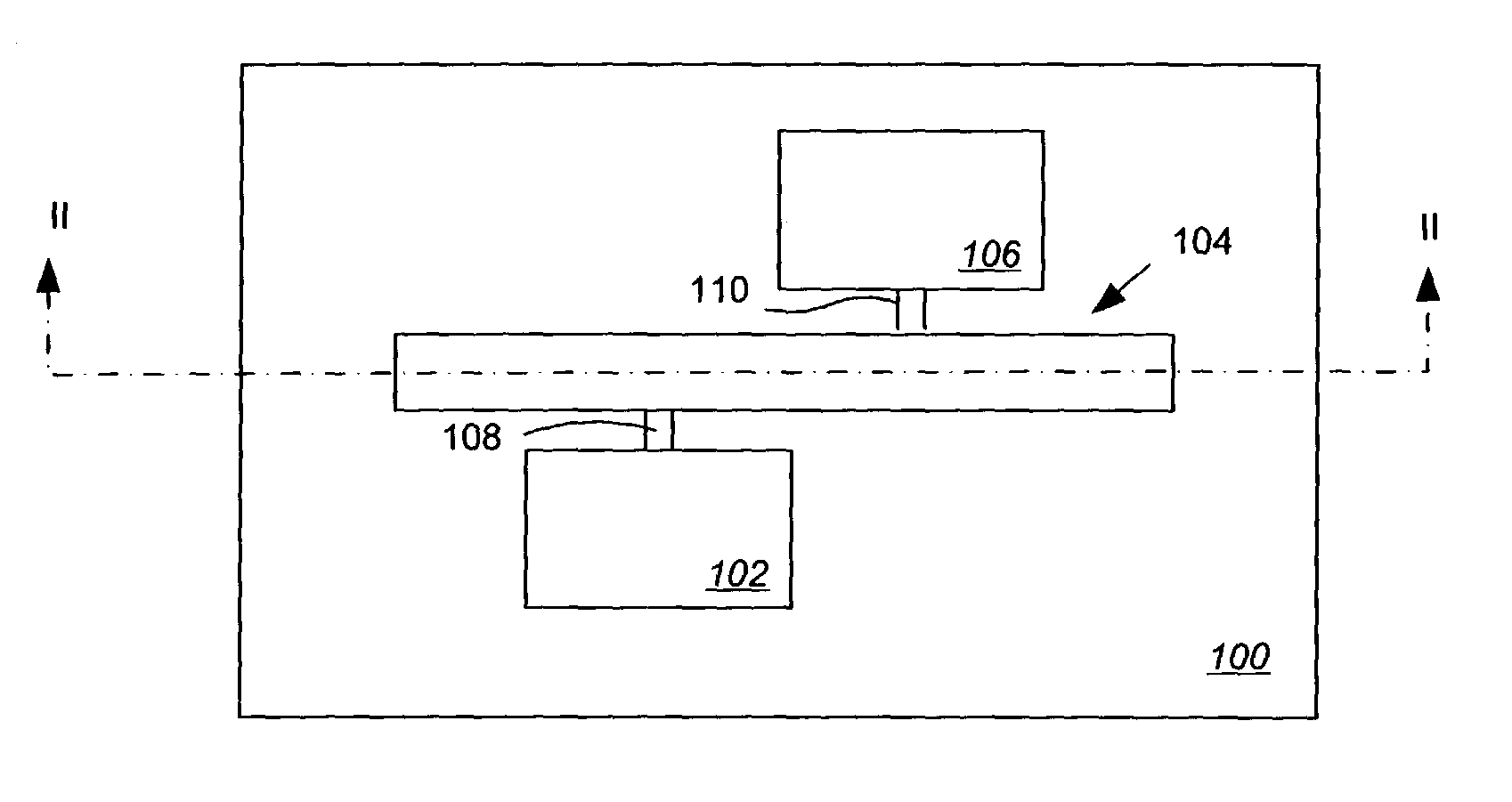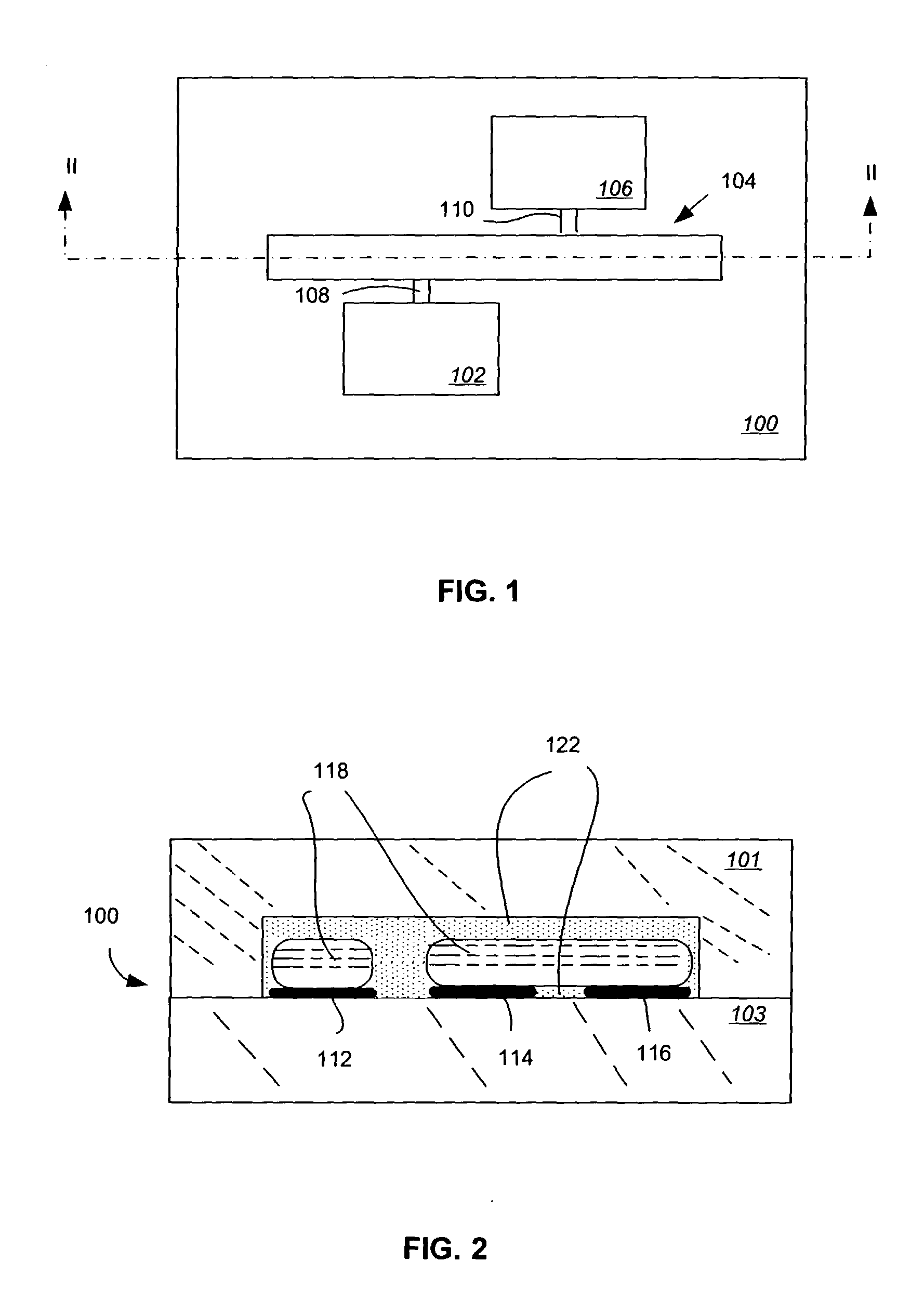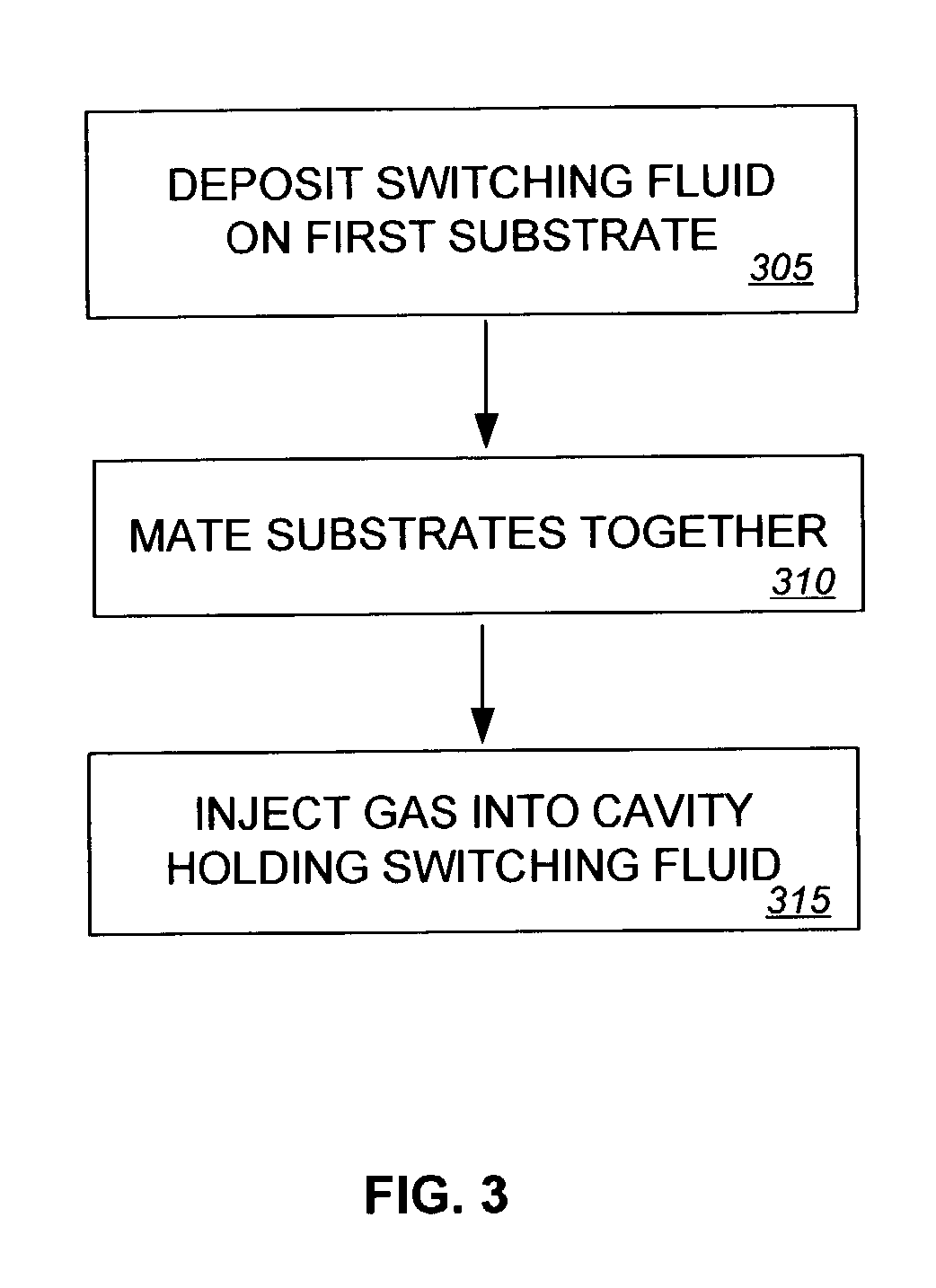Reducing oxides on a switching fluid in a fluid-based switch
a technology of switching fluid and fluid, which is applied in the direction of relays, instruments, optical elements, etc., can solve the problems of increasing the energy required for the switch to change state, affecting the proper functioning of the switch, etc., and achieves the effect of reducing oxides on the switching fluid
- Summary
- Abstract
- Description
- Claims
- Application Information
AI Technical Summary
Benefits of technology
Problems solved by technology
Method used
Image
Examples
Embodiment Construction
[0013]FIGS. 1 and 2 illustrate a fluid-based switch such as a LIMMS. The switch 100 includes a switching fluid cavity 104, a pair of actuating fluid cavities 102, 106, and a pair of cavities 108, 110 that connect corresponding ones of the actuating fluid cavities 102, 106 to the switching fluid cavity 104. It is envisioned that more or fewer channels may be formed in the switch. For example, the pair of actuating fluid cavities 102, 106 and pair of connecting cavities 108, 110 may be replaced by a single actuating fluid cavity and single connecting cavity.
[0014] As illustrated by FIG. 3, the switch 100 may be produced by depositing 305 a switching fluid 118 on a plurality of contacts 112-116 on a first substrate 103. In one embodiment, the switching fluid may be a liquid metal, such as mercury or alloys that contain gallium. As will be described in further detail below, the switching fluid 118 may be used to make and break contact between the contacts 112, 114, 116. In an alternate...
PUM
 Login to View More
Login to View More Abstract
Description
Claims
Application Information
 Login to View More
Login to View More - R&D
- Intellectual Property
- Life Sciences
- Materials
- Tech Scout
- Unparalleled Data Quality
- Higher Quality Content
- 60% Fewer Hallucinations
Browse by: Latest US Patents, China's latest patents, Technical Efficacy Thesaurus, Application Domain, Technology Topic, Popular Technical Reports.
© 2025 PatSnap. All rights reserved.Legal|Privacy policy|Modern Slavery Act Transparency Statement|Sitemap|About US| Contact US: help@patsnap.com



